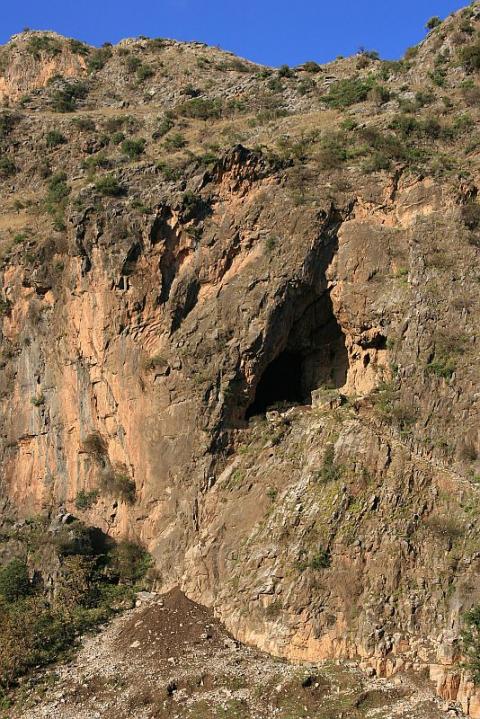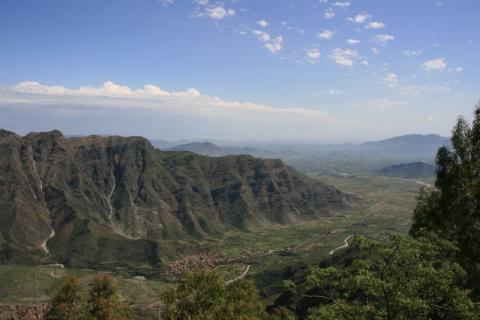Kashmir Smast is a large cave-temple located at 1135 m altitude in the Sakara mountain range (Khyber Pukhtunkhwa province, NW Pakistan), about 50 km from the city of Mardan. The cave owes its name to the local belief that it eventually leads to Kashmir.
However, in scientific literature the name also indicates the more extended antique complex surrounding the cave and is considered one of the most important and ancient Hindu establishments in the region. The whole site includes a number of minor cave shelters and sanctuaries as well as remnants of a small temple, a monastery, and water reservoirs scattered on the foothill and somehow functionally associated with the main cave. The cave itself, a natural sanctuary only minimally modified by human hand, consists of two inner chambers up 33 m high with a total length of about 180 m.
After coins, seals, and other art objects reportedly from Kashmir Smast began appearing on the art market, the Archaeological Department of Peshawar University, under the direction of Nasim Khan, began conducting surveys and small-scale excavations in 2001.
Copious numismatic finds form an uninterrupted sequence from the 2nd century BCE to the 11th century CE; the major concentration spans from the Kushan to the Hunnic period, probably corresponding to the greatest flourishing of the complex. Land slides and earthquakes might have caused the abandonment of the site somewhere between the 10th and the 12th century.
The findings relate to a range of different deities of the Hindu pantheon. This suggests that Kashmir Smast must have been a famous and much reputed holy place and a pilgrimage destination that attracted a variety of devotional movements and practices, not unlike what can still be observed on the Indian Subcontinent today. Nevertheless, ample evidence of a Shiva cult and the particularly strong connation of the sacred site as swayambhū (self-generated) have led Nasim Khan to identify Kashmir Smast as the location of the famous sanctuary dedicated to Śiva Maheśvara and his consort, Bhīmā (“the fearful one”), venerated in her swayambhū manifestation, which the Chinese pilgrim Xuanzang mentioned in the 7th century. The name Bhīmā is indeed largely present among the inscriptions from the site, where it appears on a number of ritual vessels and seals.



